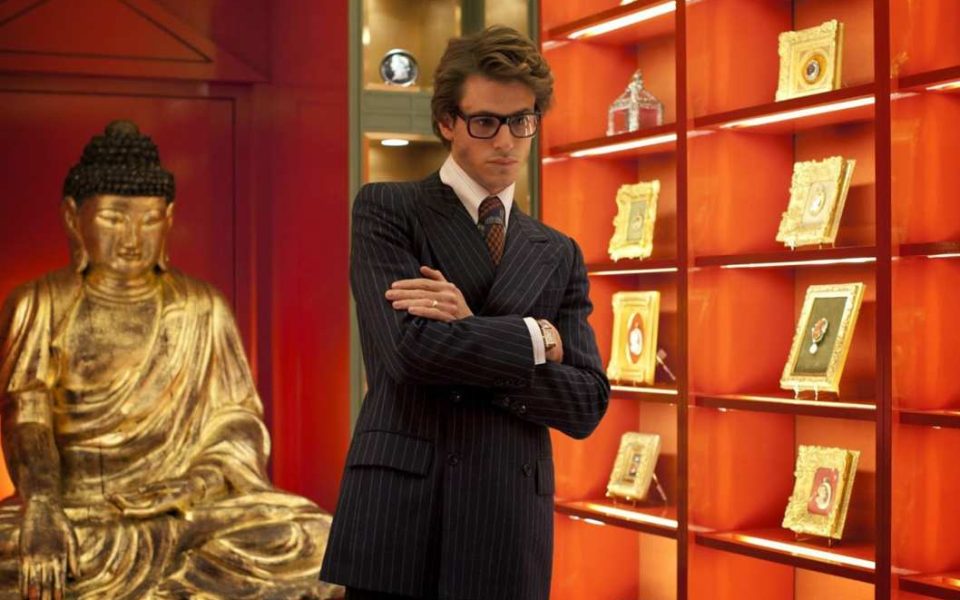by Daniel Wirtheim
There’s a scene around the 90-minute mark in which Yves Saint Laurent and his lover, Jacques, are volleying a pill between each other’s mouths as a dog convulses on the floor, the sound of heavy stroking on a leather sofa the only thing to break the excruciating silence.
It’s the point when Saint Laurent, the new biopic examining the life of prolific French designer Yves Saint Laurent, has become too much to bear.
Released to the United States in May, Saint Laurent is both exciting and tedious; a sexy, booze-driven ride with one of haute couture’s most enigmatic designers and an overdrawn sketch of his tortured mind.
It’s the second biopic on the famous designer, the other being Yves Saint Laurent which was also released in 2014 in France. Although Saint Laurent has much more to offer than the competing biopic, its runtime and lack of coherent sequencing makes it difficult to sit through. But that’s not to say it lacks any merit as a great piece of drama.
The first hour or so of the film is what moviegoers are looking for in a Saint Laurent biopic. Seventies art rock and music from the Velvet Underground build a backdrop for nights of debauchery and tight leather suits. Played by the devilishly handsome Gaspard Ulliel, Saint Laurent is never far from a cigarette and glass of whiskey. He prowls the streets at night for male prostitutes. He frequents the lively Parisian nightclubs — which could by themselves warrant an award for stage design — surrounded by his models and peering through a cloud of smoke and thick-rimmed glasses with the coiled sex power of a jungle cat.
The wild nights never seem to get a young Saint Laurent down as he’s soon back at his well-organized desk, drafting a new collection or saying something snarky to his aides. His presence is at times abrasive in the Saint Laurent design house. His seamstresses cower as Saint Laurent steps in to expel his genius in quick bursts. He abruptly rips the sleeves from a dress to make it more contemporary and tells one of his clients to let her hair down and put her hands in her pockets, somehow transforming her into a bold and confident lady.
It’s a world that only the most prominent fashionistas know, and what gives Saint Laurent a kind of energy typically reserved for Rolling Stone cover stories. But the filmmakers seemed to struggle with compressing time. Although at times done with finesse — like a split-screen montage of Saint Laurent collections juxtaposed with newsreel from the ’70s — following the chapter dates can become a bit maddening.
There is no coherent sequence in Saint Laurent. This is especially true of the last 45 minutes or so, when the older Saint Laurent is interspersed with scenes from his younger self. To make following the story even more difficult, the designer begins using LSD, which inspires hallucinations.
Just when the art-house quality of Saint Laurent is loosing its charm, the designer’s final exhibit brings back to life some of the energy of the early Saint Laurent days.
It’s a high-stakes exhibition, one of Saint Laurent’s most famous. On the runway, a series of Moroccan-style gowns is split into multiple parts, paying homage to the Piet Mondrian paintings with which he was so deeply enamored, while operatic music reaches a crescendo. The effect is a feeling of jubilance, not only for the genius of Saint Laurent but for the last 45 minutes of cinematic nonsense.
The film constantly reinforces that Saint Laurent is a genius, but the intricacies that make him great are never fully explained. Instead, it’s about a hedonistic pill-guzzler who somehow keeps it together to blow the scarves and stilettoes off of the fashion industry.
Saint Laurent is an art film, a complex, beautiful and sometimes infuriating piece of work. It moves in delirious circles and leaves the viewer feeling, as the camera fades out on a smiling Saint Laurent that the joke is on them.
Saint Laurent screens at Geeksboro Coffeehouse Cinema in Greensboro on Wednesday and Thursday, at noon and 7 p.m.
Join the First Amendment Society, a membership that goes directly to funding TCB‘s newsroom.
We believe that reporting can save the world.
The TCB First Amendment Society recognizes the vital role of a free, unfettered press with a bundling of local experiences designed to build community, and unique engagements with our newsroom that will help you understand, and shape, local journalism’s critical role in uplifting the people in our cities.
All revenue goes directly into the newsroom as reporters’ salaries and freelance commissions.


Leave a Reply